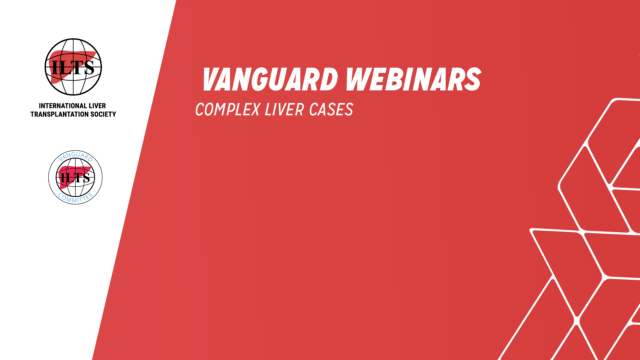What we´re reading…
This month’s key articles were selected by Ryan Chadha, David Victor, and Young In Yoon.
HEPATOLOGY
Transplantation
Survival After Liver Transplantation: An International Comparison Between the United States and the United Kingdom in the Years 2008-2016
Background: Compared with the United States, risk-adjusted mortality in the United Kingdom has historically been worse in the first 90 d following liver transplantation (LT) and better thereafter. In the last decade, there has been considerable change in the practice of LT internationally, but no contemporary large-scale international comparison of post-transplant outcomes has been conducted. This study aimed to determine disease-specific short- and long-term mortality of LT recipients in the United States and the United Kingdom. Read more.
American Journal of Transplantation
HOPE in Action: A Prospective Multicenter Pilot Study of Liver Transplantation from Donors with HIV to Recipients with HIV
Liver transplantation (LT) from donors-with-HIV to recipients-with-HIV (HIV D+/R+) is permitted under the HOPE Act. There are only 3 international single case reports of HIV D+/R+ LT, each with limited follow-up. We performed a prospective multicenter pilot study comparing HIV D+/R+ to donors-without-HIV to recipients-with-HIV (HIV D-/R+) LT. We quantified patient survival, graft survival, rejection, serious adverse events (SAEs), HIV breakthrough, infections, and malignancies, using Cox and negative binomial regression with inverse probability of treatment weighting. Read more.
Pediatric Blood and Cancer
Waitlist mortality and post-liver transplant outcomes of pediatric patients with hepatocellular carcinoma and hepatoblastoma in the United States
Background: Liver transplantation (LT) is offered in cases of advanced disease for both pediatric patients with hepatoblastoma (HBL) and those with hepatocellular carcinoma (HCC). Current United States organ allocation priorities differ between the two groups.Methods: We retrospectively examined the waitlist and posttransplant outcomes of pediatric LT candidates with HBL and HCC using the United Network for Organ Sharing registry (February 2002 to September 2020). Read more.
SURGERY
Transplantation
The Need to Update Endpoints and Outcome Analysis in the Rapidly Changing Field of Liver Transplantation
Liver transplantation (LT) survival rates have continued to improve over the last decades, mostly due to the reduction of mortality early after transplantation. The advancement is facilitating a liberalization of access to LT, with more patients with higher risk profiles being added to the waiting list. Read more.
Annals of Surgery
Post-Transplant Hepatocellular Carcinoma Surveillance: A Cost-Effectiveness AndCost-Utility Analysis
Objective: Assess cost-effectiveness and -utility associated with post-transplant HCC surveillance compared to standard follow-up.Summary Background Data: Despite the lack of prospective clinical data, expert consensus recommends post-transplant surveillance to detect hepatocellular carcinoma (HCC) recurrence in a latent phase, while it might be amenable to curative-intent therapy. Read more.
Liver Transplantation
Non-invasive Risk Stratification for NAFLD Among Living Liver Donor Candidates: A Proposed Algorithm
To reduce waitlist mortality, living donor liver transplantation (LDLT) has increased over the past decade in US, however, not at a rate sufficient to completely mitigate organ shortage. As a result, there are ongoing efforts to expand the living liver donor pool. Read more.
ANESTHESIOLOGY AND CRITICAL CARE
HPB
A decline in functional status while awaiting liver transplantation is predictive of increased post-transplantation mortality
Background: Functional status (FS) is dynamic and changes over time. We examined how changes in FS while awaiting liver transplantation influence post-transplant outcomes. Read more.
Journal of Surgical Research
Perioperative Skeletal Muscle Fluctuations in High-Acuity Liver Transplantation
Background: Frailty has been implicated as a negative predictor of Liver Transplant (LT) outcomes. However, an understanding of changes in patient muscle mass peri-LT, and their effect in high-acuity patients remains lacking. We examined the impact of perioperative muscle mass changes (ΔSMI) on high-acuity (MELD ≥35) LT recipients. Read more.
World Journal of Surgery
Safety and Efficacy of Tranexamic Acid to Minimise Perioperative Bleeding in Hepatic Surgery: A Systematic Review and Meta-Analysis
Introduction: Perioperative bleeding poses a major risk during liver surgery, which can result in increased transfusion requirements, morbidity, and mortality. Tranexamic acid (TXA) effectively reduces perioperative bleeding and transfusion requirements in trauma patients. However, there remains a lack of evidence of its use in liver surgery. This meta-analysis of randomised controlled trials evaluated the efficacy and safety of TXA in liver resection and transplantation. Read more.







